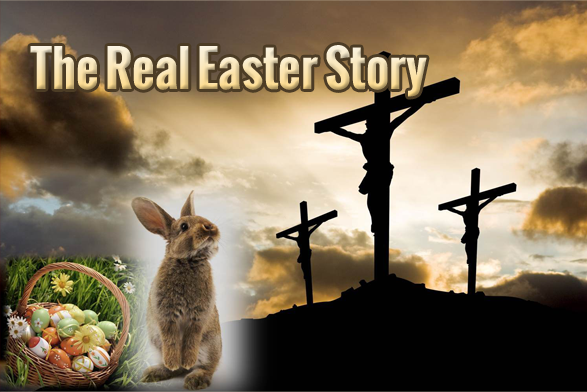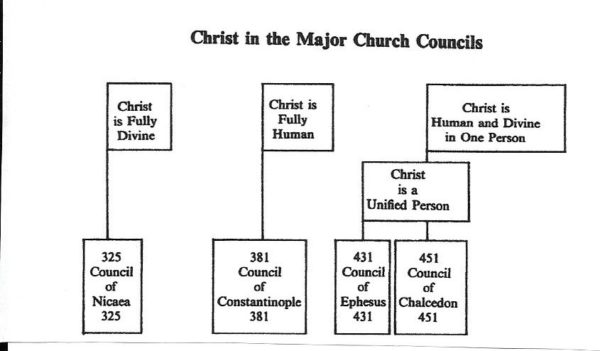The Early Christian Church Councils & Creeds
The year is 313 AD and Christianity has just been legalized. Up to this point in time, it was illegal to be a Christian. The last two Roman Emperors, Decius and Galerian, had instituted the worst of the Christian persecutions. But when Constantine became Emperor, he issued his ‘Edict of Toleration’ that said that Christianity was now a “legal” religion.
Up to this point, Christianity had only minor doctrinal differences in the church-at-large. They were mainly concerned about spreading their faith and not getting beaten or killed for it. The church councils arose because it was the first time when Christian leaders could meet openly and all together. These councils were like a state-of-the-union for the church at large. They also decided other certain things and they gave everyone a view of what the larger church was like and what it was doing wherever it existed.
The Council of Nicea (325 AD)
Around 315 AD, a popular priest from Egypt, Arius, came into serious disagreement with his bishop, Alexander. Arius didn’t believe in the trinity. He taught that Jesus was a god but not THE God. Our modern day equivalent is the Jehovah’s Witnesses. A common Arian slogan was “There was a time when He (the Son of God) was not”.
Constantine called this meeting of Christian leaders, the first one since the Council at Jerusalem in 49 AD (Acts 15) to deal with this issue and other church matters in general. The meeting was held in the city of Nicea, in modern day Turkey. Over 300 leaders attended. Many of them had disfigured, scarred bodies from the persecutions of the few previous years. Within one month, the Nicene Creed was produced. It was a ringing endorsement of the trinity and a condemnation of Arius’ views. The vote was something like 2318-2.
Also at that meeting was a bishop named Nicholas from the area of Myra (like a state in modern day Turkey). Yes, he’s the one who later was known as Saint Nicholas, the person whom Santa Claus was modeled after. He voted with the majority.
Even though the Arians would rise to ascendency a few times in the next hundred years or so, the orthodox view eventually triumphed. A bishop named Athanasius was one of the champions of the orthodox view of Jesus and the trinity. The Nicene Creed established once and for all, the identity of Jesus as one part of the trinity. Arius was ex-communicated from the church. His views were considered heretical. This council specified that Christ was fully God in addition to being human. Here is the Nicene Creed;
The Council at Constantinople (381 AD)
Constantinople is present day Istanbul. The most significant outcome of this council was to uphold and update the Nicene Creed and to condemn Arianism and Sabellianism. Sabellianism taught that sometimes God appeared as the Father, other times as the Son and yet other times as the Holy Spirit. So, this was one God who appeared in different “modes” (or put on a different face) at different times. This belief is called modalism and was condemned at Constantinople. This council specified that Christ was fully human in addition to being God.
The Council at Ephesus (431 AD)
Ephesus is in modern day Turkey. This council was an affirmation of the creeds of Nicea and Constantinople and condemned the views of Nestorius, a pastor in Antioch who became the bishop of Constantinople. Nestorius had some strange views on Christ but he was widely hated for his views on Jews. This council taught that Christ is a unified person in His godly and human side. The two natures are separate but unified.
The Council at Chalcedon (451 AD)
Chalcedon was a town near Constantinople. This council also affirmed the full deity and full humanity of Christ by the union of His spiritual and human natures into one person. The council condemned any other view of Christ. As you can see, once Christianity was legalized, the devil worked overtime in muddying our view of who Jesus really was. If he couldn’t stop Christ at the cross and the resurrection, he’d try stopping His church early on by confusing us about the very nature of Jesus. The devil is a liar. He tries to convince us of a false Jesus. And we know what the apostle Paul thinks of a false Jesus (Galatians 1:6-8). And that has eternal consequences (Galatians 1:10 Matthew 24:4,5, 23-25). This council defined once and for all time who Jesus really is.
The Apostle’s Creed
The rise of false teachings required believers to state their faith in shortened form. Several New Testament letters were written to counteract these false teachers.
– Colossians counteracted Gnosticism
– Galatians counteracted the Judaizers
– 1st, 2nd & 3rd John plus Jude warned against false teachers.
We think the Apostle’s Creed derives from the 2nd century baptismal creed used in Rome. It was not written by the original apostles.
For example, the Gnostics, a little like today’s New Age religions, had no problem fitting Jesus into their belief system. After all, He was just another god. Christian apologists defeated Gnosticism in the arena of ideas but it took a while. By the 5th century, Gnosticism was pretty well defeated. But, in the process, believers found that creeds (a short summary of what Christians believed) worked well for them, especially declaring their faith at their baptism. Here is the Apostle’s Creed;
The person of Jesus Christ is clearly defined. Humanity is defined also as being in rebellion against God. Mankind does not need a teacher, a guru or ascending to a higher spiritual plane. He needs a Savior. And that Savior is Jesus Christ.
Book references:
“The History of Christianity” – A Lion Handbook
“Church History in Plain Language” by Bruce L. Shelley
“The Popular Encyclopedia of Apologetics” by Ed Hindson & Ergun Caner
For His Kingdom,
Dave Maynard
https://bsssb-llc.com









